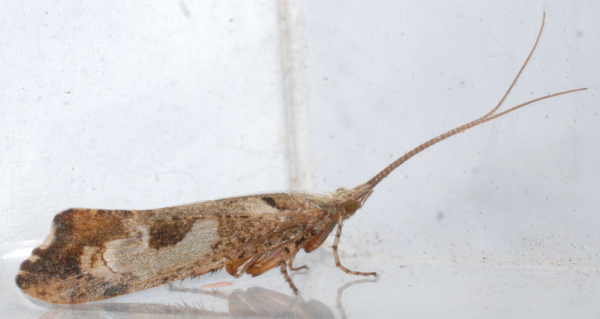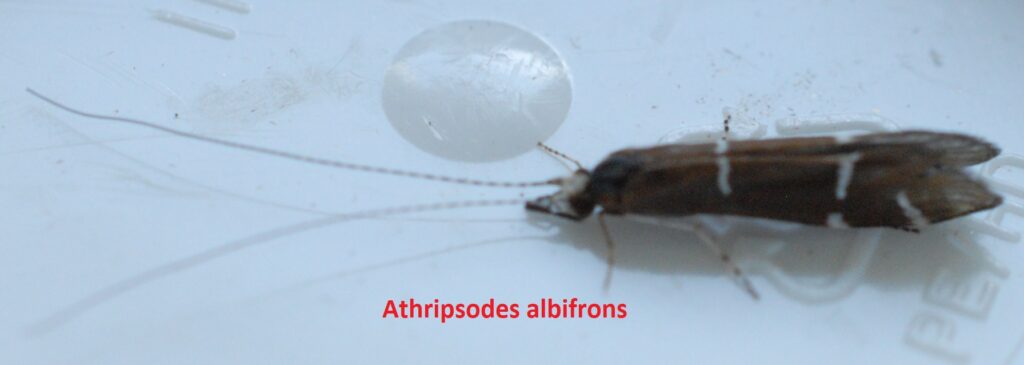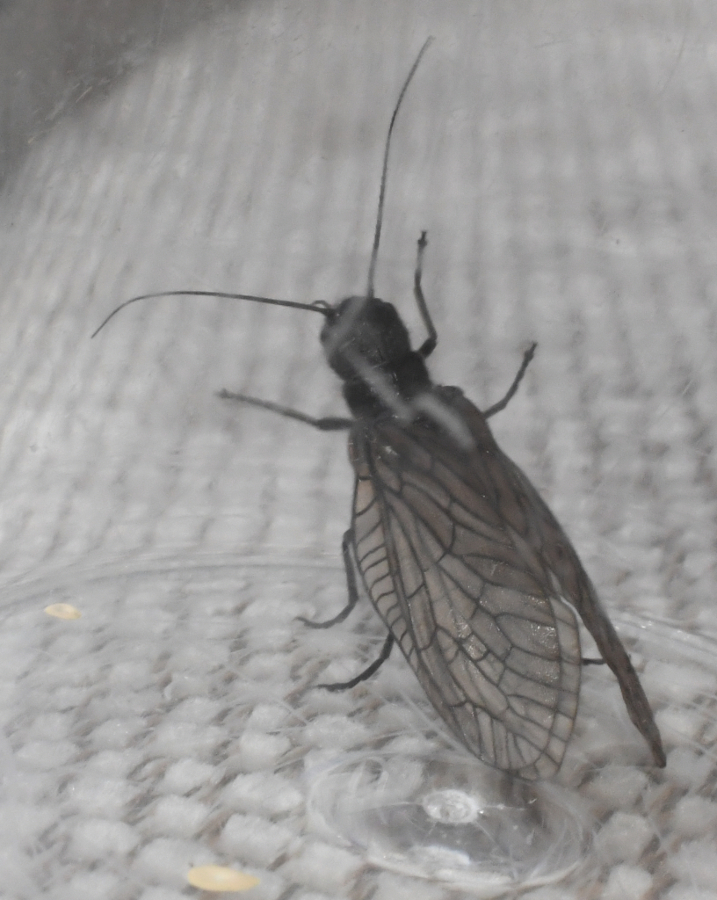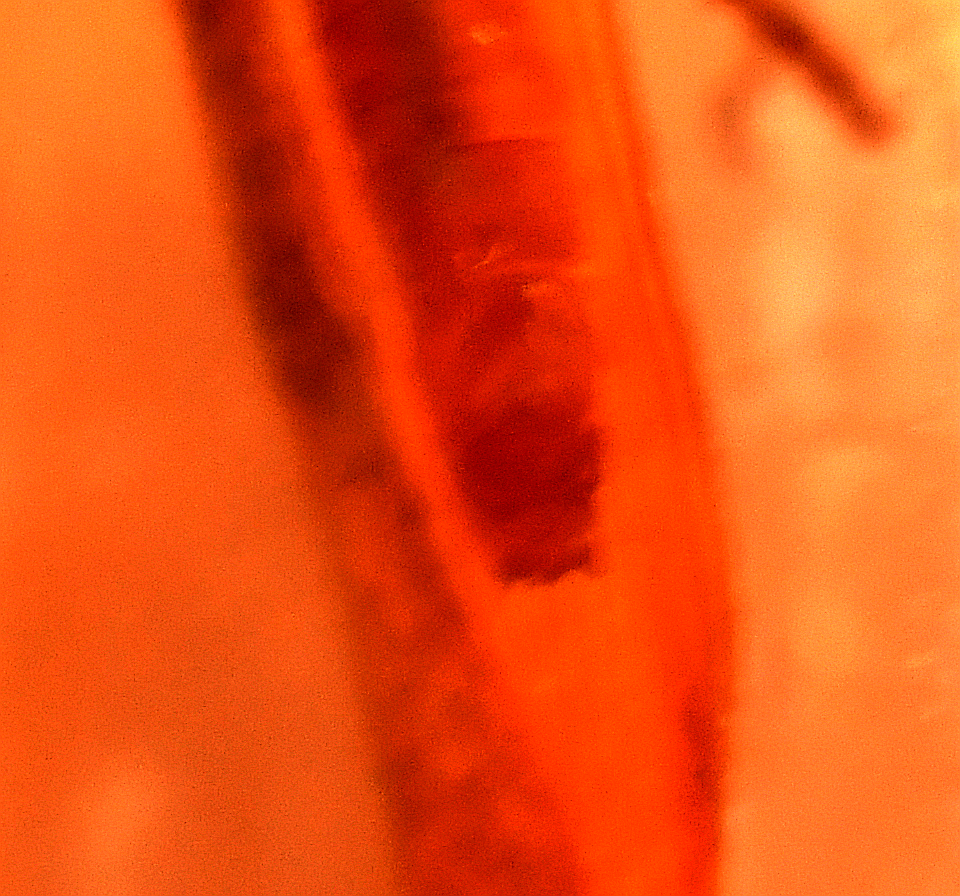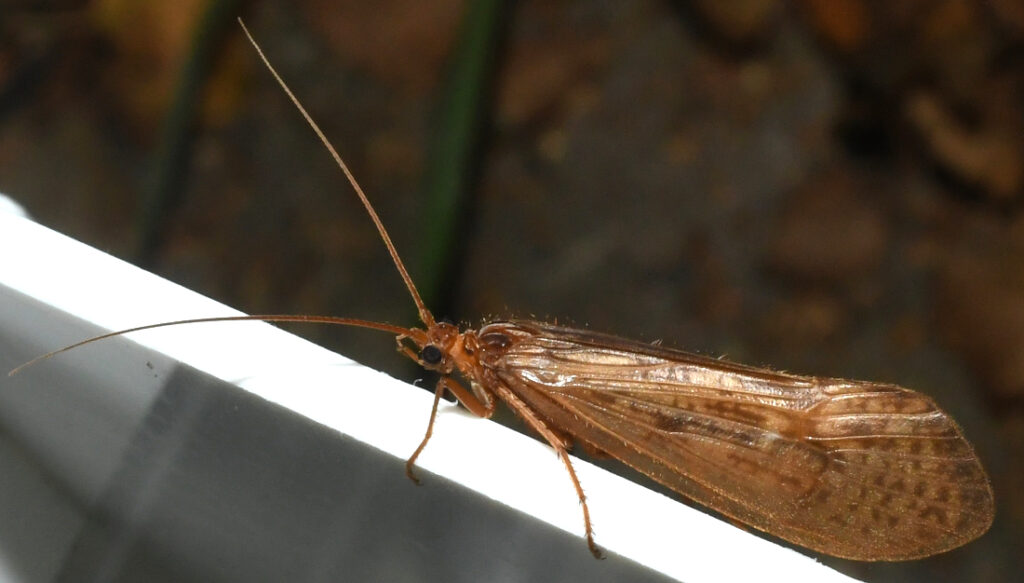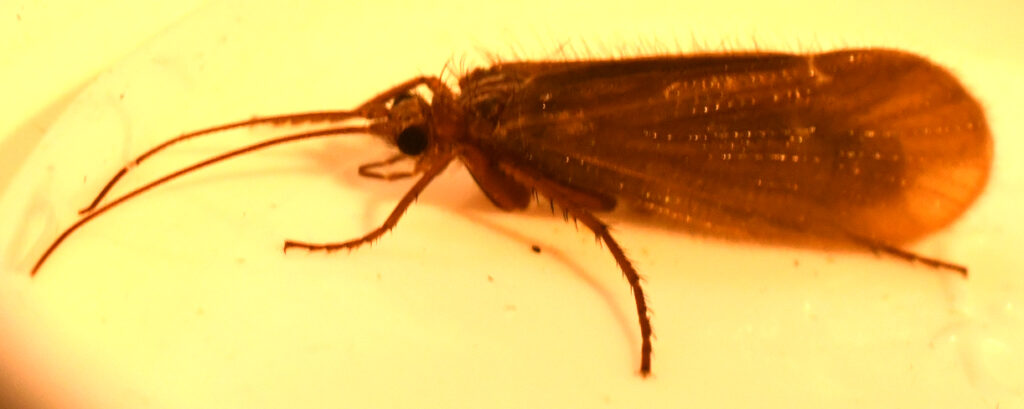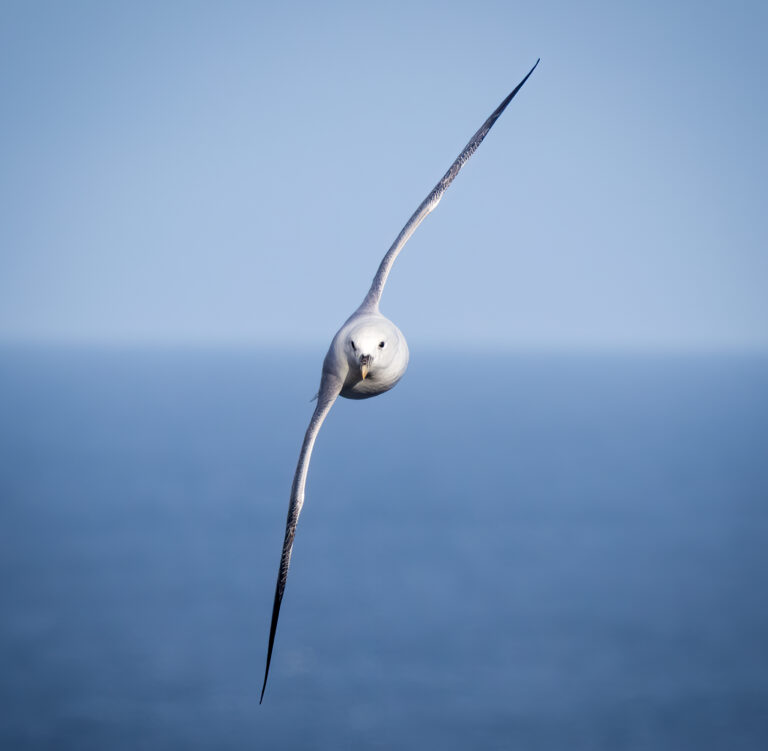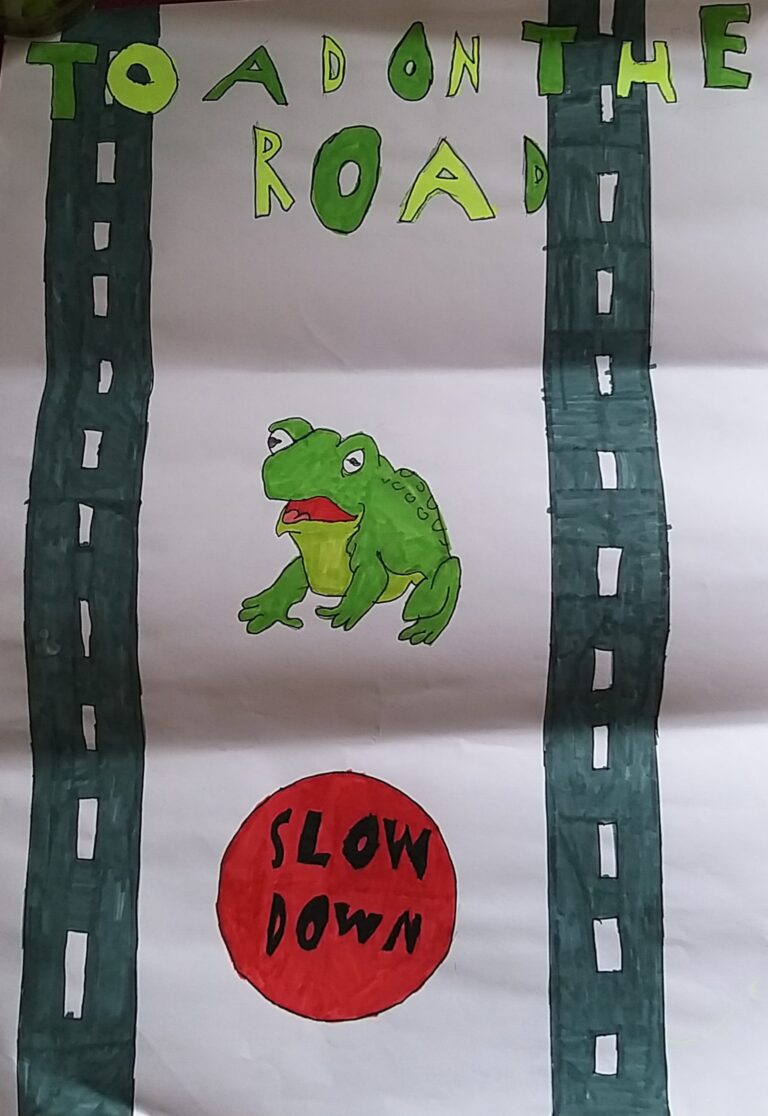Introduction
Caddisflies are well known to most people interested in wildlife but they need a close look and some care for identification and aren’t very well recorded in the North-West Highlands, including in the North Sutherland area. Like dragonflies and damselflies, they need fresh water for breeding, the larvae being wholly aquatic, and it is only in the final adult stage of their life that they take flight in order to mate and lay eggs for the next generation.
Many historical caddisfly records are of the larvae, some of which build protective cases that vary according to species. Handbooks are available for both the free-living and the case-building larvae, which can be caught for identification by searching or hand-netting in bodies of water, either still or flowing. However, this brief introduction to recording caddisflies is focussed on the final free-flying adult phase of their life, for which there are two very useful (essential?) guides.
Barnard, P. and Ross, E., 2012, The adult Trichoptera (caddisflies) of Britain and Ireland, Royal Entomological Society Handbooks for the Identification of British Insects, Vol. 1, Part 17, published by the Field Studies Council.
Wallace, I., Flint, S. and Flint, P., 2022, Adult Caddis (Trichoptera) of Britain and Ireland: a practical guide, Aidgap Guide from the Field Studies Council.
The author uses the second of these books as the primary aid to identification and the first book as a useful additional reference.
A useful internet source of guidance is the NatureSpot website which illustrates the caddisflies found in Leicestershire and Rutland.
A brief note on names
Most common (English) names for caddisflies were given to them by anglers, who weren’t necessarily interested in distinguishing to species. Thus while some names correspond to distinct species, others do not. For example the anglers’ Caperer applies to both Halesus digitatus and Halesus radiatus. For this reason Latin names are used in this document, as in most texts on caddisflies.
Catching your Caddis
Wallace et al (2022) gives some extremely useful initial guidance to caddisflies, including on the usual processes for collecting the insects, from which the following is a summary:
Taking Britain as a whole, adult caddisfly activity is greatest in the spring and the autumn, with a lull in the summer. This might not be the case in the north of Scotland, however, where the later springs, cooler summers and earlier autumns than further south might reduce the tendency for the summer lull.
Identifying your Caddis
Having caught your caddis, what do you do with it? Again, Wallace et al (2022) gives guidance on this. Firstly, you need to get it into a dry, clear-sided tube or container where it can be viewed and photographed. A clear side view is the most essential, showing any patterning on the wings and the length of the antennae relative to the body. Flash can help freeze any body or camera movement to give a crisp, clear picture but it can also generate unwanted reflections from the wings and from the container. The author tends to take photographs both with and without flash. With some well-marked common species of caddis, such as Limnephilus lunatus, Glyphotaelius pellucidus and the two Halesus species, this can be sufficient to confirm identification.

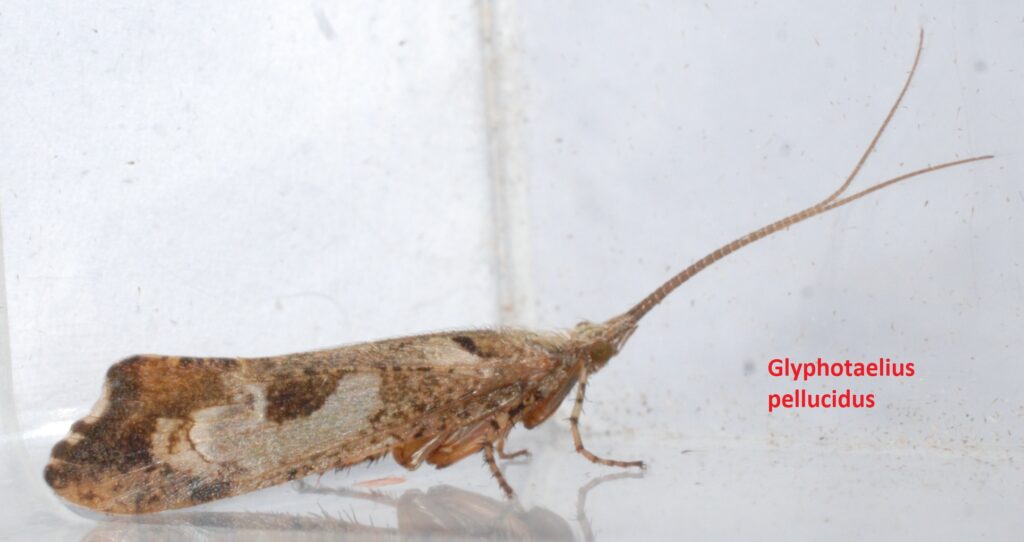


For most caddis, though, care is needed to make sure that all the detail has been taken into account – such as the white head that marks out this Athripsodes caddis as Athripsodes albifrons.
Of course, often the caddis will refuse to stay still and cooperate with your desire for a photograph! Patience is a desirable attribute here – leave it quiet to hopefully settle down in a position in which you can photograph it. If moving it for a better photograph disturbs it, try chilling it in the fridge and then go through the process again. If that fails, Wallace et al (2022) gives guidance on how it is possible to temporarily anaesthetise caddisflies without killing them.
Beware though – it might not be a caddis. Again Wallace et al (2022) gives guidance on possible confusion groups. For example, the following insect found in Sutherland turned out to be an Alderfly.
The Genitalia
For many caddis that don’t have wing patterns clearly identifiable to one particular species, it is necessary to look at the genitalia, located on the end of the abdomen. For large caddis, this can often be done without killing the insect, with photographs taken either through the wall of the container or of the anaesthetised insect. A macro lens is extremely useful for this degree of detail. Both Wallace et al (2022) and Barnard & Ross (2012) give details of male and female genitalia for each species. The following image was taken with a macro lens through the wall of a container and while it is blurred as a result it was sufficient to confirm that the individual attracted to light near Loch Naver was a Stenophylax permistus rather than its close cousin Stenophylax vibex.
Killing and Preserving
Many wildlife enthusiasts, quite reasonably, don’t like the idea of killing insects in order to identify and record them and the issue tends to raise strong reactions. This used to be the standard way of doing things and is the source of much of our reference material in museum collections. Like it or not, we have to recognise that the collection of such specimens formed the basis for much of our current knowledge on invertebrates. The argument, though, is over the question of whether continuing to collect insects and other forms of wildlife can still be justified.
Like other wildlife enthusiasts, the author long held the view that killing wildlife in any way was undesirable. However, he has now been persuaded by several recorders working on invertebrates that one of the significant threats to these creatures is a lack of knowledge, especially in areas like the Scottish Highlands with a relatively small number of people recording them. Put simply (and admittedly perhaps a little simplistically), you can’t conserve and protect something if you don’t know it’s there. The advent of modern digital photography has added a new mechanism to wildlife recording but is unable to satisfy all needs. The author has therefore come to a compromise view that it is acceptable to kill a small number of insects, including caddisflies, in order to identify them and increase our knowledge of their distributions. To put it in a broader context the number so killed is totally insignificant in comparison with the number that are killed or their habitats adversely affected by many other environmentally-damaging human activities.
The author’s approach is in keeping with the code of conduct for insect collecting accessible via the website of the Royal Entomological Society (RES) or directly at RES collecting code.
To illustrate the approach, a recent trip by the author to the Angus Glens yielded two caddisfly records. The first was a Halesus digitatus (below) that came to light in Glen Clova, for which a photograph on the trap was sufficient evidence for identification.
The other (below), the following night in Glen Prosen, was more problematical as this small (10mm wing length) caddis could have been one of several similar-looking species. Caddisflies are not well recorded in the Angus Glens so the decision was taken to kill it as humanely as practicable to enable photography of the genitalia under a microscope, photographs that were subsequently sent to an expert for identification.
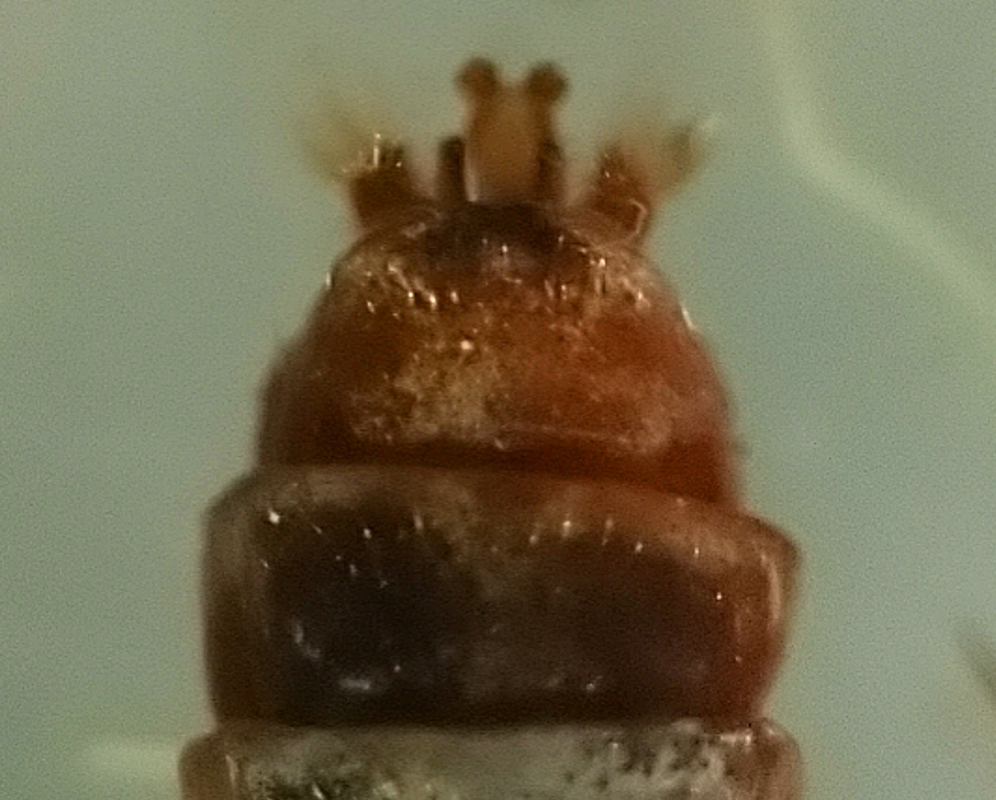
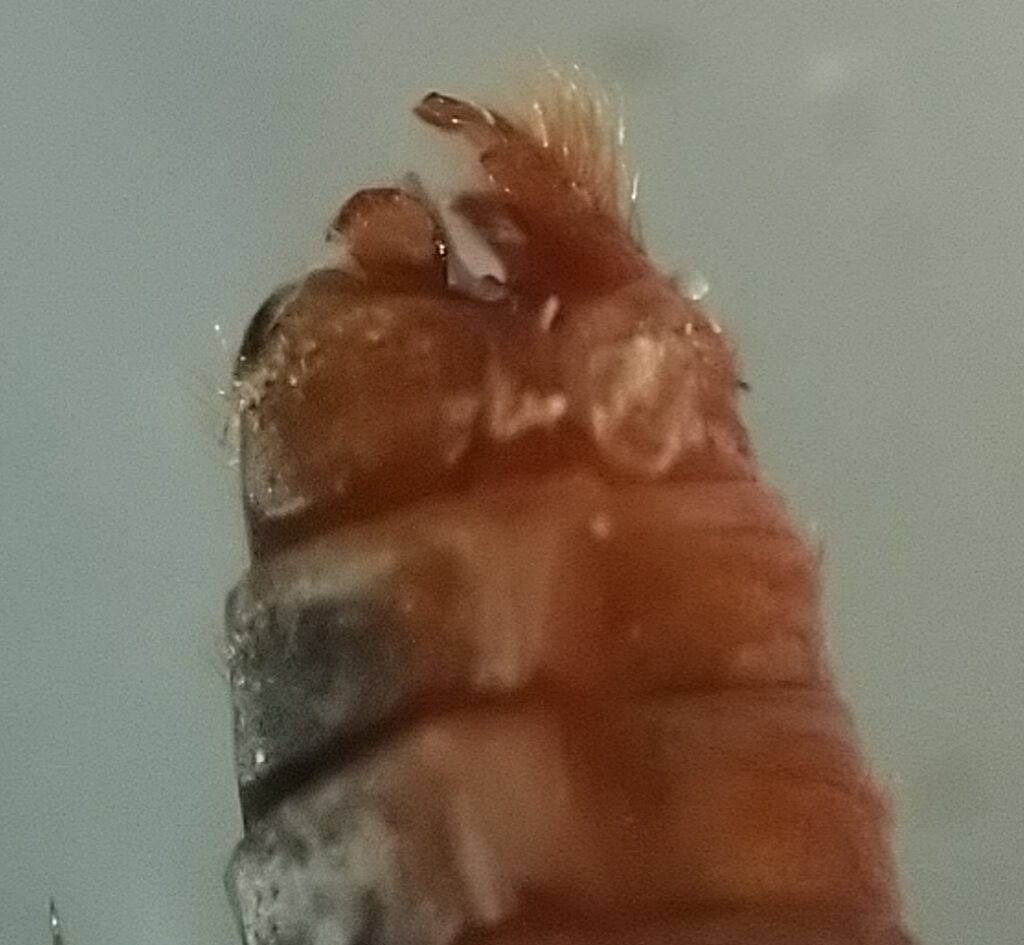
This caddis was identified as Chaetopteryx villosa, a widespread and common caddisfly but less well recorded in Scotland and with only a few records in the vice-county of Angus. Any one such record adds only a little to our knowledge but nevertheless it is only by adding such records that we can progressively build up the bigger picture that leads to a better understanding of our wildlife.
A Warning
If you fancy getting into caddisfly identification don’t expect to be able to identify them all. Start with the larger ones with obvious patterning and that will get you used to handling them and understanding what you need to look at. Try getting photographs of the genitalia on some of these larger ones, working out whether they are male or female and how the details compare with illustrations in the guides. That process could take some time to get to grips with. Then start looking at some of the trickier ones, though you might only get them to groups of similar species or even to just a family. And recognise that there are some, like the micro-caddis, that are just for the experts!
Submitting Records
The repository of information on caddis distributions is the UK Caddis (Trichoptera) Recording Scheme run by Dr Ian Wallace, based at Liverpool Museum. The scheme aims to map the distributions in England, Scotland and Wales of our 198 species, and note the habitats in which they live.
The preferred way to submit sightings to this scheme is via iRecord. Appropriate photographs should ideally be included so that the identifications can be verified. The author has found that submission in this way is straightforward and verification has been completed within a reasonable space of time, including for caddisfly records in North Sutherland.
This article was written by Don Matthews.
All images © of author.

